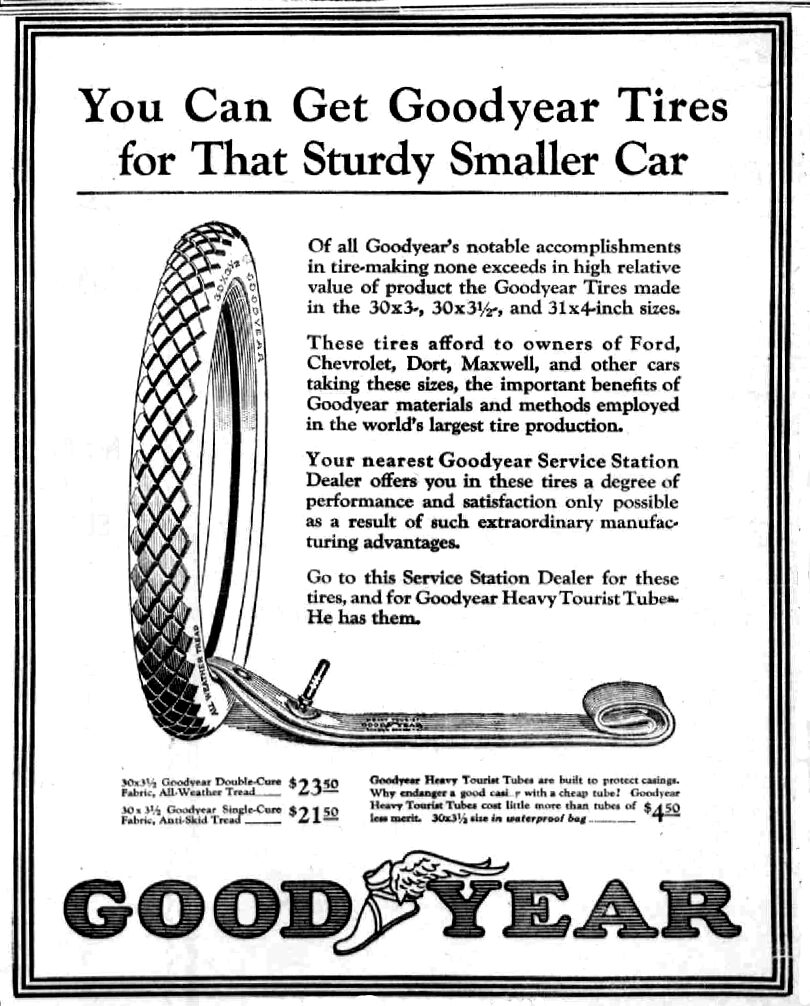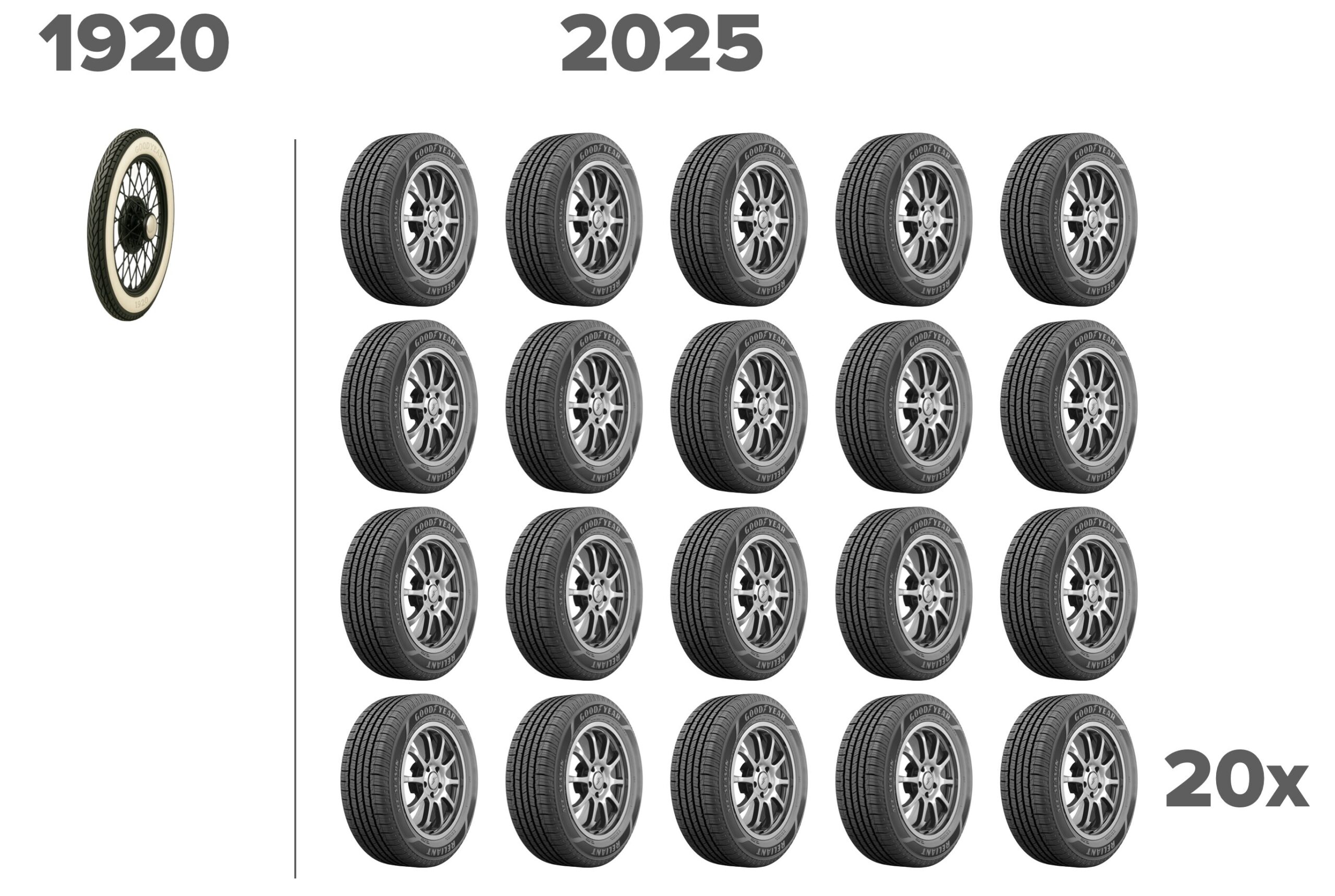Summary: Thanks to advances in materials, engineering, and manufacturing, tires have undergone a dramatic transformation since the 1920s, improving not only in affordability but also in performance, safety, and durability. Whereas a single tire once required 90 hours of unskilled labor to purchase, it now takes less than five—and that tire lasts up to 80 times longer and performs vastly better.
In 1920, you could buy a new Goodyear tire for your Ford, Chevrolet, Dort, or Maxwell for $21.50. A tube for the tire would add another $4.50. Unskilled workers at the time were earning about 29 cents an hour, putting the time price of the $26 combination at almost 90 hours.

Today, Walmart sells the Goodyear Reliant 195/60R15 88V All-Season Tire for $77. Unskilled workers today earn about $17.17 an hour, indicating a time price of 4.46 hours.
For the time it took to earn the money to buy a single tire in 1920, you could get 20 of them today.

Car tires today are also vastly superior to those manufactured in 1920 because of advancements in materials, design, and manufacturing.
- Materials: In 1920, tires were made from natural rubber with cotton or fabric cords, prone to punctures and rapid wear. Modern tires use synthetic rubber, steel belts, and advanced compounds (e.g., silica) for better durability, grip, and fuel efficiency. Today’s tires last between 50,000 and 80,000 miles versus the 1,000 to 2,000 miles tires lasted in 1920.
- Construction: Early tires were bias ply; their plies were arranged diagonally, with stiff sidewalls that limited handling and comfort. Radial tires, introduced in the 1940s and made standard by the 1970s, offer better traction, stability, and ride quality because of their flexible sidewalls and steel-reinforced treads.
- Performance: Modern tires are engineered for specific conditions (e.g., all-season, winter, high-performance), with optimized tread patterns for grip, water dispersion, and noise reduction. Tires made in 1920 had basic treads, poor wet performance, and frequent blowouts at speeds above 30 to 40 miles per hour. Today’s tires can handle speeds above 100 miles per hour safely.
- Safety: Tubeless tires, common since the 1950s, reduce blowout risks compared with 1920s tube-type tires. Many modern tires also feature puncture-resistant layers and run-flat technology, absent in 1920.
- Manufacturing: Precision engineering and computer-aided design ensure consistent quality in modern tires, unlike the handmade, inconsistent tires of 1920.
Quantitatively, modern tires are 40 to 60 times more durable, support 3 to 4 times higher speeds, and provide 5 to 10 times better grip, based on historical tire performance data and industry standards. These improvements stem from decades of innovation driven by safety, performance, and efficiency demands.
Applying a conservative 50x multiplier for all these qualitative improvements to the 20x reduction in time price suggests that today’s car tires are at least 1,000 times better than their 1920 counterparts.
The next time you’re cruising down the interstate at 75 miles per hour, say a little prayer of gratitude for the relentless pursuit of better tires—driven by ingenuity, competition, and the quest for progress.





